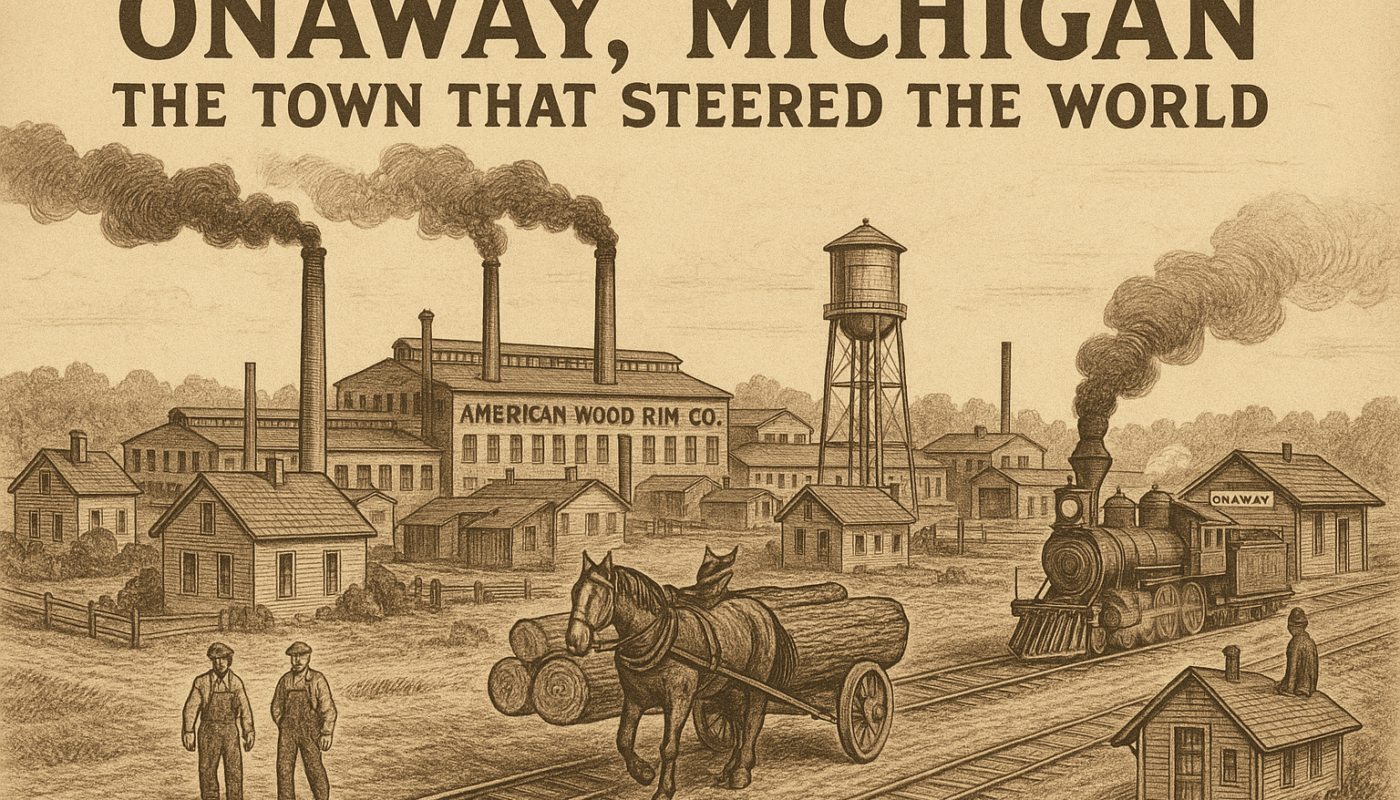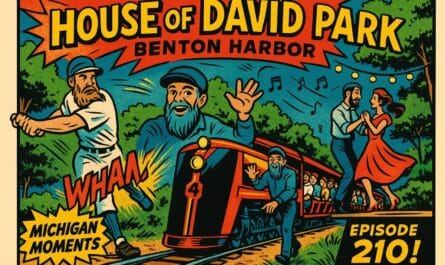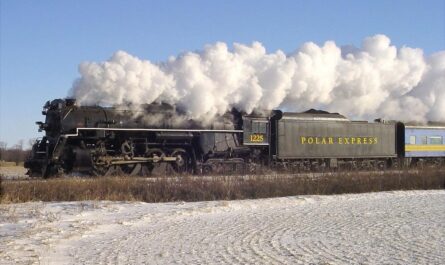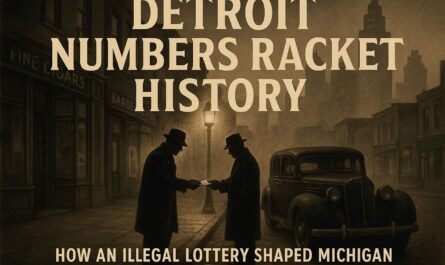Onaway Michigan is a small city in the northeastern Lower Peninsula that experienced dramatic boom-and-bust cycles in its first decades. Founded in the early 1880s as a logging settlement, it rapidly grew into an industrial hub by the 1900s, becoming the largest city in Presque Isle County at its peak. Onaway was especially known for its lumber mills and the American Wood Rim Company, which produced the majority of the world’s wooden steering wheels in the early 20th century. After a devastating factory fire in 1926 and the end of the lumber era, the town’s fortunes sharply declined, but a resilient community spirit helped Onaway survive the Great Depression and begin recovery by 1940.
Video – Onaway, Michigan- The Town That Steered the World
Key Events and Milestones of Onaway Michigan (1881–1940)
- 1881–1882: First settlers arrive. Thomas E. Shaw settles the area in 1881; a post office opens on October 23, 1882 (named “Shaw” with Shaw as postmaster).
- 1886: Merritt Chandler arrives and plats a new village, which he names “Onaiweh” (later Onaway) meaning “awake,” inspired by Longfellow’s Hiawatha.
- 1882–1897: The young community’s name changes multiple times amid local rivalries – the post office name goes from Shaw to Onaway in 1890 (when Chandler becomes postmaster), to Adalaska in 1893 (when Shaw regains the postmaster position), and finally back to Onaway permanently in 1897.
- 1898: The railroad arrives – the first Detroit & Mackinac freight train reaches Onaway on March 28, 1898, opening a vital link for commerceo.
- 1899: Onaway is incorporated as a village.
- 1901: Entrepreneur E. J. Lobdell relocates his wood-products business to Onaway, founding the American Wood Rim Company and leveraging the area’s abundant hardwood – this marks the start of Onaway’s industrial boom.
- 1903: Onaway incorporates as a city. Its population soars to around 3,000, making it the largest city in Presque Isle County at the time.
- 1908: Chandler funds and builds an imposing county courthouse in Onaway, hoping to claim the county seat (an honor that ultimately remains with Rogers City).
- 1911: A proposal to create a new “Forest County” (with Onaway as the county seat) fails in the state legislature; as a compromise, county court sessions begin alternating between Rogers City and Onaway until the 1940s.
- 1921: Onaway State Park is dedicated on the shores of Black Lake just outside the city, becoming Michigan’s second-oldest state park.
- January 14, 1926: A catastrophic fire breaks out in the sanding room of the American Wood Rim Company. Within hours the massive factory is destroyed, wiping out Onaway’s primary industry and livelihoods in a single day.
- 1932: Amid the Great Depression, the Onaway State Savings Bank closes its doors, delivering another blow to the struggling community.
- 1940: In a turning point for recovery, residents purchase back tax-foreclosed properties at a “scavenger sale,” stabilizing the tax base. Onaway begins to rebound by utilizing New Deal programs and fostering small businesses and tourism.
Founding and Early Settlement (1881–1890s)
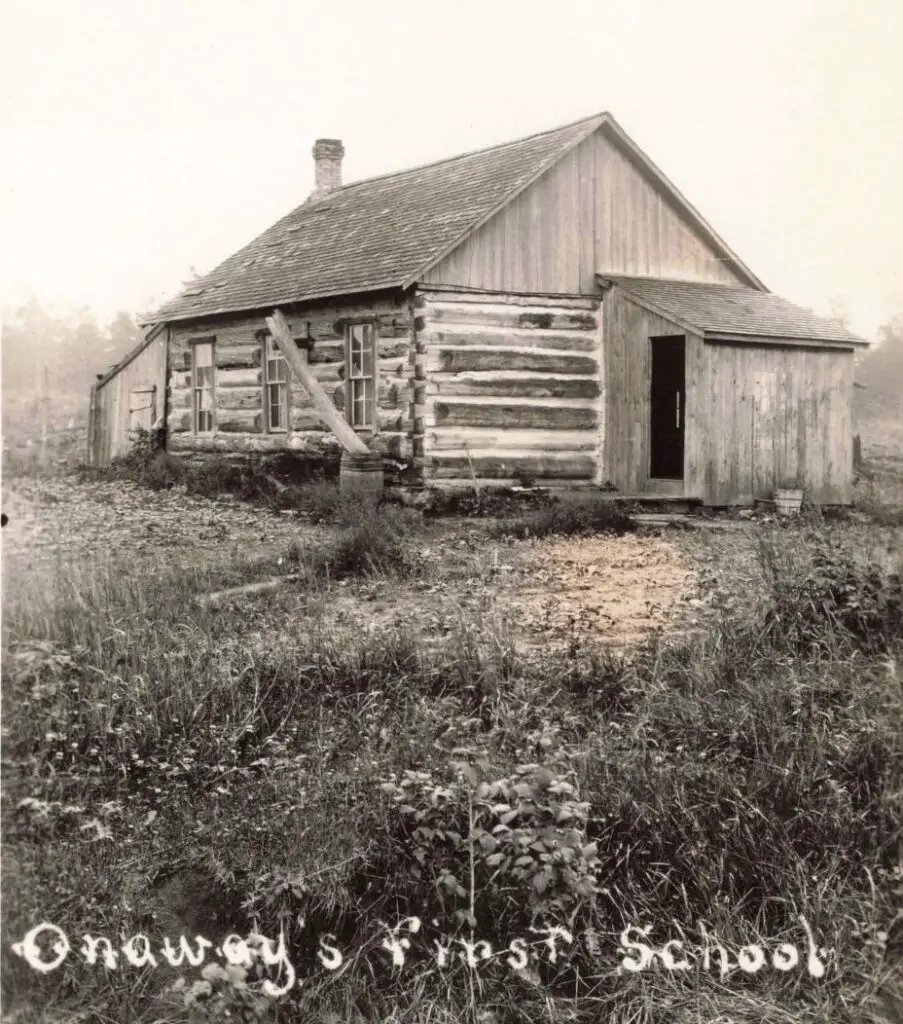
In the early 1880s, the place that would become Onaway was little more than wilderness – a “wide place in the trail” amid unbroken forests of northern Michigan. Settlers were drawn to the area’s abundant timber and the promise of fertile land once it was cleared. One of the first pioneers was Thomas E. Shaw, who arrived in 1881 and established a small settlement known as Shaw’s Post Office. Shaw opened the first post office (in 1882) and taught the community’s first school (with just seven pupils) while also operating the first local hotel.
In 1886, Shaw’s brother-in-law Merritt Chandler came to the area, bringing organization and grand ambitions. Chandler platted a village and, with his wife, named it “Onaiweh”, meaning “awake,” a word taken from Henry Wadsworth Longfellow’s Song of Hiawatha. Both Shaw and Chandler were Quakers and active community builders, but they often clashed in their vision for the town. Chandler, an educated Quaker and former lumberman, envisioned a sober, orderly community – he even forbade the sale of alcohol on any land he sold, writing a ban on liquor into every property deed.
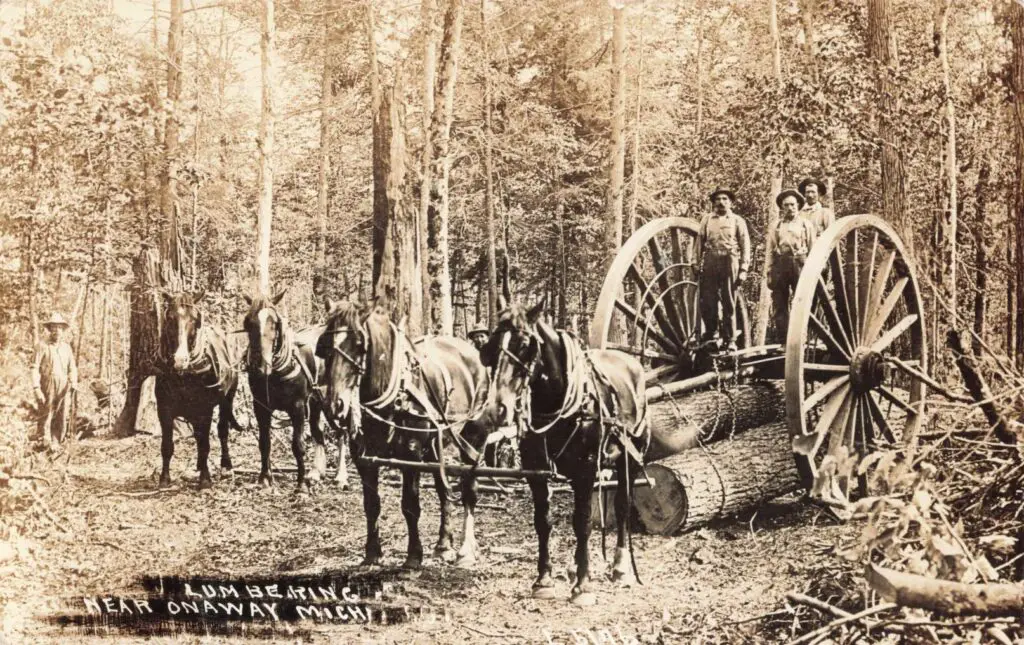
Shaw, while also civic-minded, differed in approach and at one point reclaimed control of the post office from Chandler, changing its name in 1893 to “Adalaska,” before Chandler once again took over and restored the name Onaway in 1897. Despite these early power struggles, the settlement continued to grow, building rudimentary roads and attracting more families. By the late 1890s, Onaway was transitioning from a pioneer hamlet into an organized village centered on logging camps and homesteads.
Economic Development and Industry
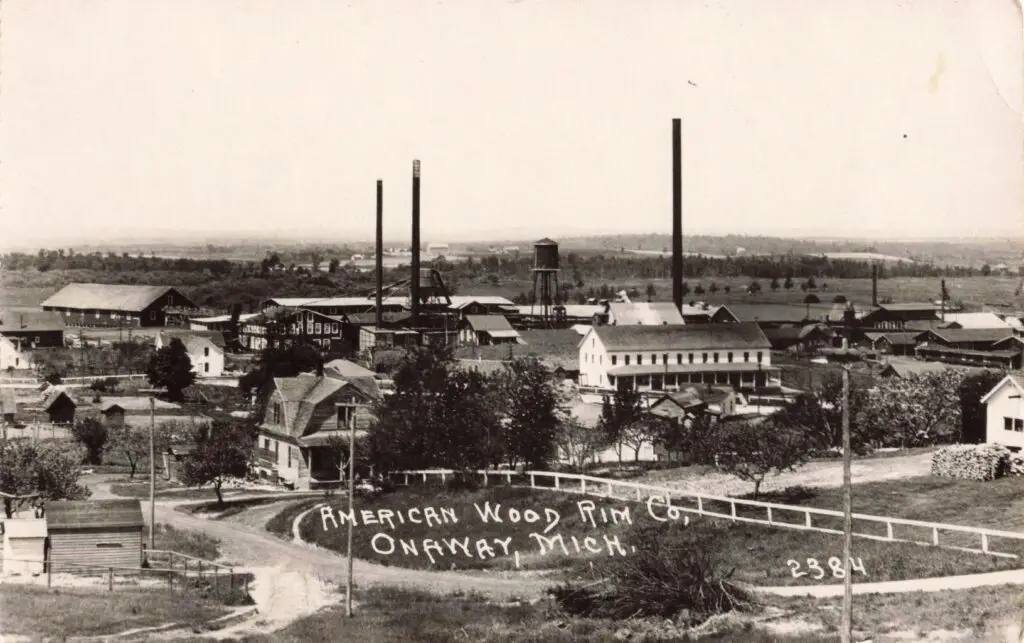
The economy of Onaway was built on natural resources and manufacturing. In its early years, the vast stands of hardwood timber were the primary asset – numerous lumber camps and sawmills sprang up to harvest the virgin forest. By the turn of the century, at least seven lumber mills were operating in the vicinity of Onaway. Sawmilling and wood products attracted further investment.
Around 1901, industrialist E. J. Lobdell moved his Ohio-based bicycle parts business to Onaway to take advantage of the local timber supply. Lobdell’s venture evolved into the American Wood Rim Company, which produced wooden automobile steering wheels and bicycle rims on a massive scale. This factory, along with its sister firm the Lobdell & Emery Manufacturing Co., became the lifeblood of Onaway’s economy.
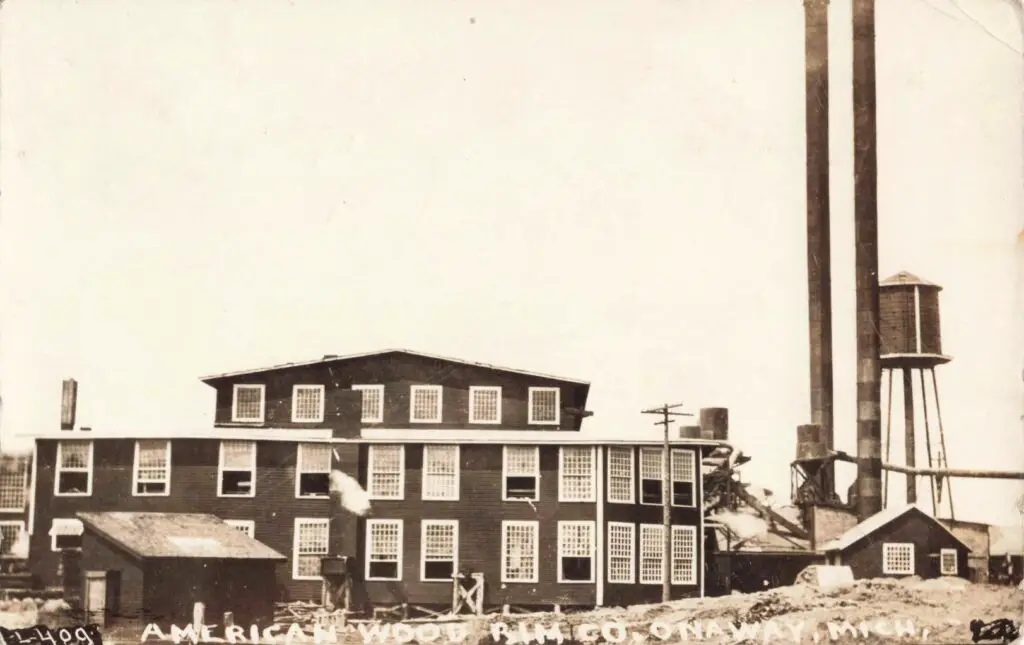
At its peak in the 1910s–1920s, the American Wood Rim Company was reputed to be the world’s largest producer of wooden steering wheels, supplying about 65% of all wooden steering wheels in the world. The sprawling plant occupied 44 acres and employed hundreds of workers (with estimates of 800 up to 1,200 workers when combined with the allied mills).
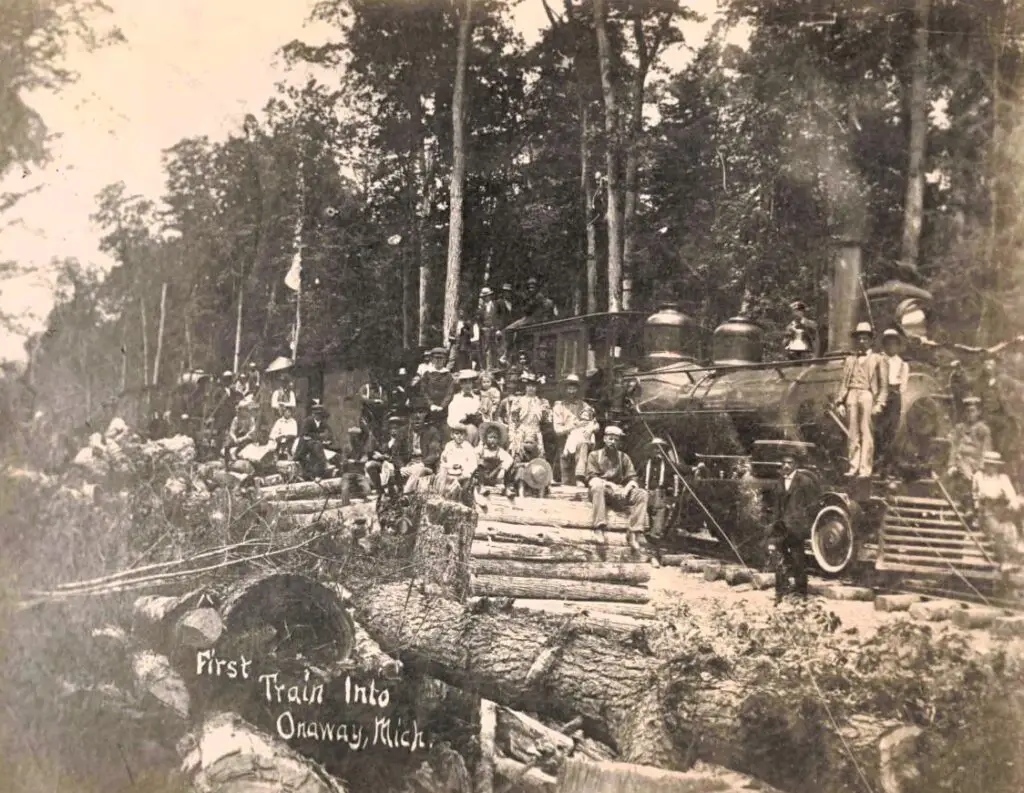
The railroad was another key economic driver. In March 1898 the Detroit and Mackinac Railway reached Onaway, connecting the town to markets and transportation hubs. The influx of rail service, along with Chandler’s earlier road-building in the region, allowed Onaway to ship lumber and finished goods far afield.
The Wood Rim Company even maintained its own 10-mile logging railroad line, the Onaway and North Michigan Railway, to haul timber from the forests. As a result of these industries, Onaway boomed: new businesses opened, and the population swelled from only about 500 people in the late 1890s to roughly 3,000 by 1903. By the early 1920s, Onaway’s population reached an estimated 4,000 at its height, an extraordinary figure for a town in this remote area. The city’s prosperity earned it the slogan “Onaway Steers the World,” reflecting its prominence in the steering wheel manufacturing sector.
Disaster Strikes Onaway
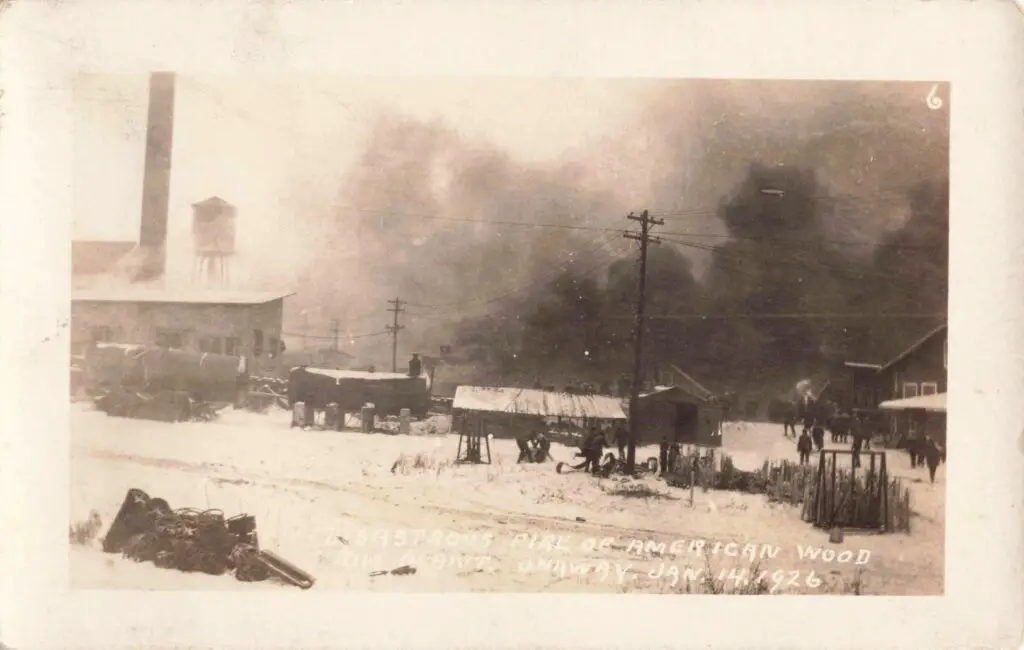
However, Onaway’s economic good fortunes were largely tied to a single industry – and that dependence proved calamitous in 1926. On January 14, 1926, a fire ignited in the Wood Rim factory’s sanding department and swiftly spread through the plant’s blowers and dry wood supplies. Within hours, the gigantic facility was in ruins, and Onaway’s main employer was gone.

The fire was a devastating blow: overnight, thousands of workers and their families were rendered jobless. In the days immediately after the disaster, waves of laid-off lumbermen and factory hands left town, seeking work elsewhere. The American Wood Rim Company’s owner, E. J. Lobdell, decided not to rebuild in Onaway – instead, he relocated the operation to a plant in Alma, Michigan, inviting employees to follow him there (many did).
With the mills closed and the timber largely cut over, Onaway’s economic base collapsed. Property values fell precipitously (the city’s assessed valuation plummeted from $1.5 million before the fire to only $200,000 afterward) and remaining merchants struggled as the population shrank. For the remainder of the 1920s and 1930s, Onaway’s economy shifted to survival mode.
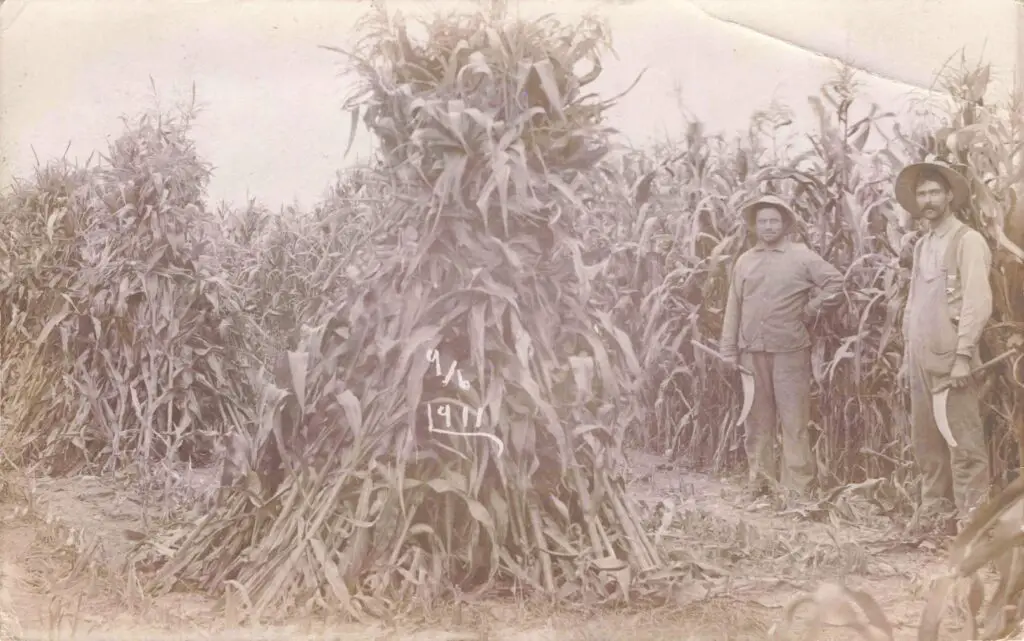
Some residents turned to small-scale farming on the cutover lands – a future that Chandler had optimistically predicted years earlier, noting the richness of the cleared soil for agriculture. Others found employment with New Deal public works projects in the 1930s. Tourism also began to play a modest role by the late 1930s, thanks to the nearby state park and the area’s natural beauty. It was only after 1940 that new small factories and a rejuvenated tourism sector would slowly give Onaway a more diversified economy, but the early 20th-century boom times would never return to their former scale.
Social and Cultural Life
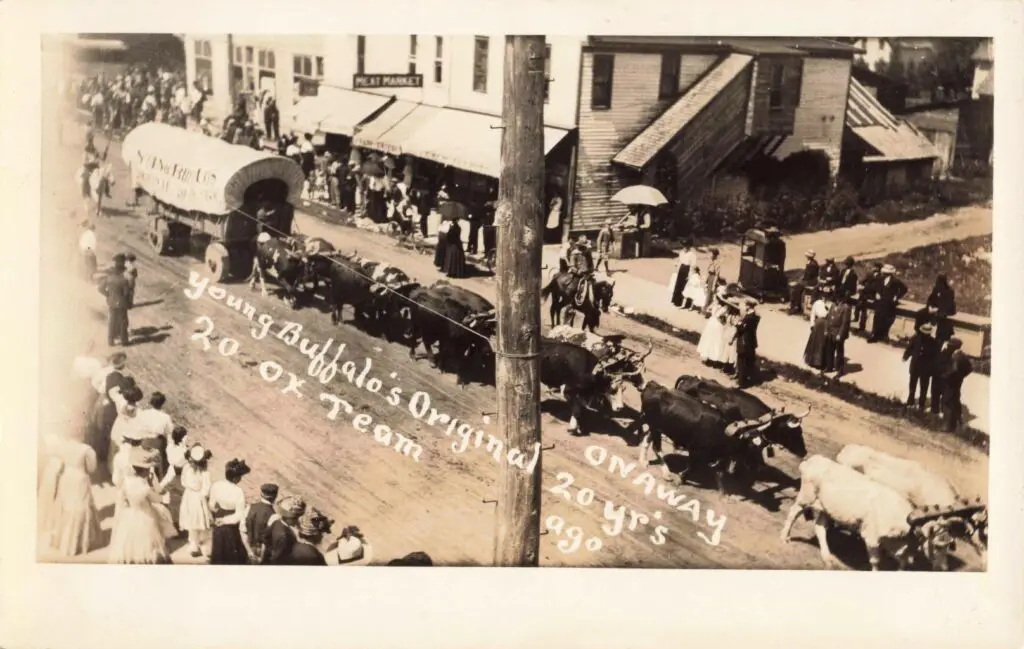
During its heyday in the early 20th century, Onaway enjoyed a vibrant social and cultural scene that reflected its rapid growth and prosperity. The city boasted two newspapers (such as the Onaway Outlook and others) keeping residents informed, and a range of entertainment and civic amenities that might be expected in a much larger town.
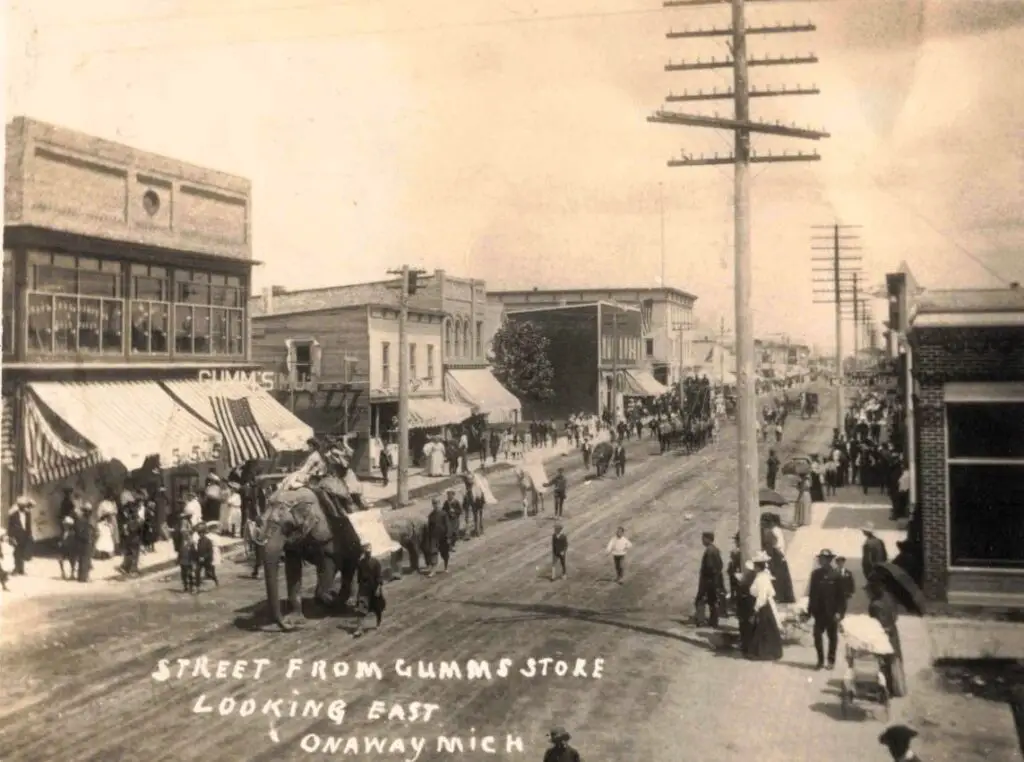
By the 1910s, downtown Onaway featured three large hotels to host visitors and new arrivals, and at least 17 saloons or taverns – a striking number, especially given the town’s early attempts at temperance under Chandler. Balancing the saloons, Onaway was also home to nine churches of various denominations, reflecting a diverse and active religious community.
Social life offered something for everyone: an opera house in town hosted traveling shows and local performances, a fairground with a horse racetrack provided excitement for farmers and lumbermen on weekends, and boxing matches (“prize fights”) were staged for sporting entertainment. Such amenities earned Onaway the nickname “the biggest little town in northern Michigan” during its peak, as it had many of the institutions of a small city despite its remote location.
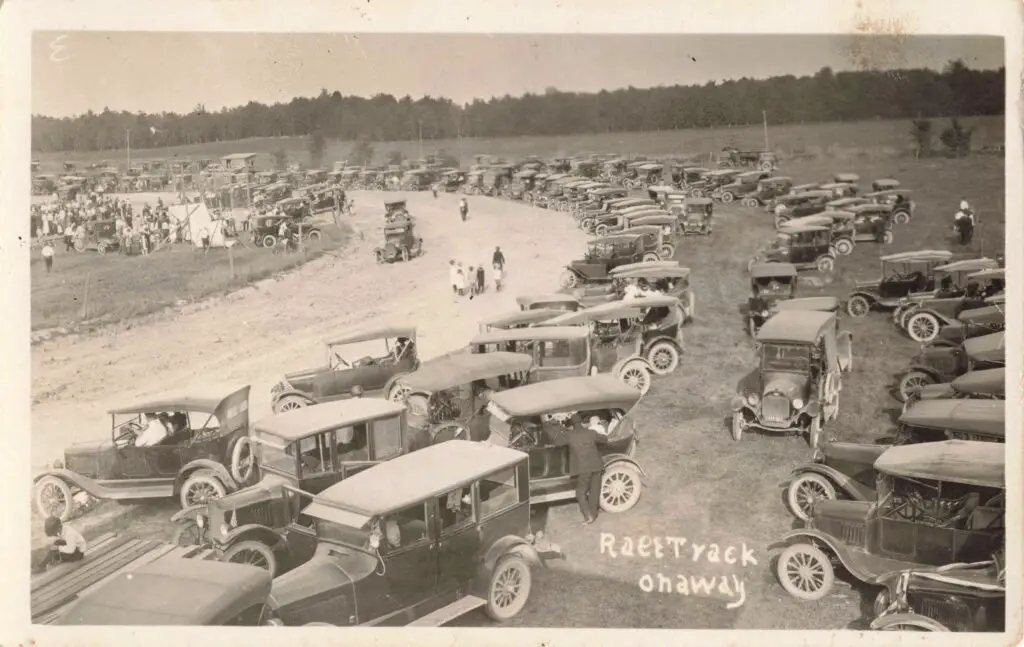
Onaway’s social fabric also included community events and outdoor recreation. The Presque Isle County Fair was held in Onaway in the early years, taking advantage of the fairgrounds and drawing crowds from surrounding areas. In the 1920s, outdoor enthusiasts could enjoy the newly established Onaway State Park on Black Lake (just a short drive from town). Opened in 1921, Onaway State Park is one of Michigan’s oldest state parks, offering camping, picnicking, and lake access – it became a popular spot for family outings and remains a lasting legacy of the era.
During Prohibition (1920–1933), local geography gave Onaway an ironic claim to fame: Presque Isle County (where Onaway is located) was “dry,” but neighboring Cheboygan County to the west was “wet” for part of that period. As a result, the road between Onaway and the village of Tower (just over the county line) became one of the most traveled routes in the region, as residents crossed into Cheboygan County to obtain liquor when it was not available at home. This cross-county trek for illicit refreshment was a colorful aspect of Onaway’s social life in the Prohibition years.
The Effects of the Great Depression on Onaway
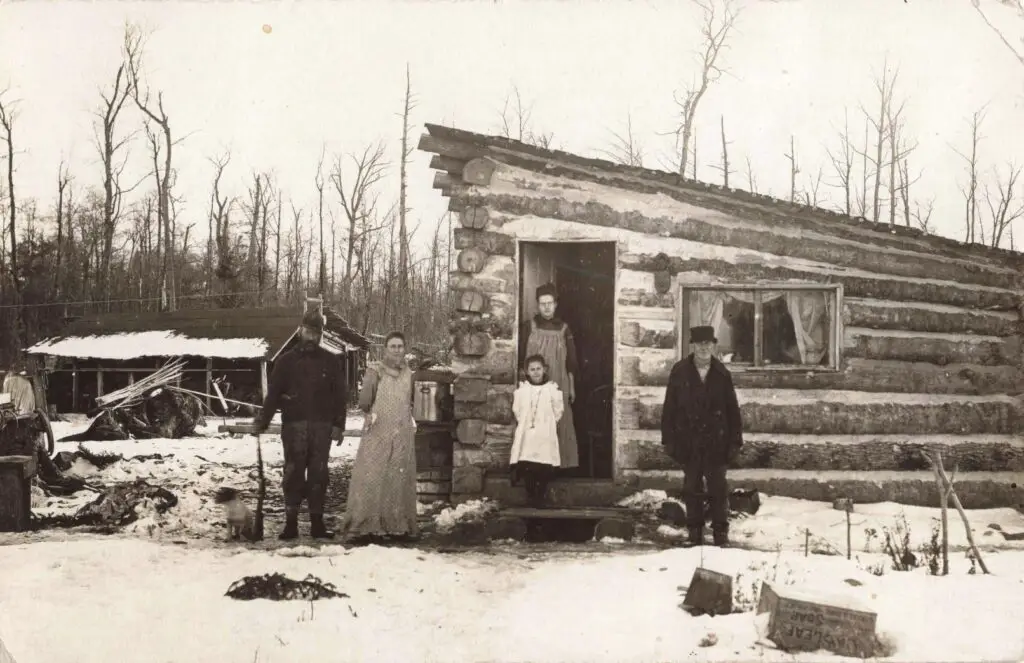
The Great Depression era brought a very different social atmosphere. After the 1926 factory fire, Onaway’s population and fortunes declined drastically. Many storefronts and homes fell vacant. By the early 1930s, observers described Onaway as almost a ghost town. Families struggling in Detroit and other cities, displaced by the Depression, sometimes drifted into Onaway and became squatters in the empty houses – “they just moved in, rent free,” as one account noted. Good houses in town could be bought for as little as $40 or $50 during this time, illustrating the depth of the bust.
Social institutions suffered as well: in 1932 the only bank in town failed, wiping out savings and undermining what confidence remained. Yet even in these hard times, Onaway’s community showed resilience. Neighbors helped each other with barter and subsistence farming. Federal relief programs in the late 1930s (the Works Progress Administration, etc.) financed local improvement projects, which not only upgraded infrastructure but also lifted civic morale. By the end of the 1930s, Onaway still had a much smaller population than before, but its citizens had a renewed determination to rebuild their town’s social and civic life – a determination that set the stage for the post-1940 recovery.
Political and Civic Developments
Onaway’s formal governance began at the end of the 19th century. The community incorporated as a village in 1899 and shortly thereafter as a city in 1903, once the population had grown large enough to justify city status. In those early years, local politics could be contentious despite the town’s small size. Both Democrats and Republicans were present in the populace, and disputes sometimes arose between the lumber mill owners and the general townspeople over how to manage growth and resources.
The fledgling city government oversaw basic services and improvements even as rivalries persisted. In 1908, Merritt Chandler – eager to elevate Onaway’s stature – constructed and donated a courthouse building in hopes of moving the Presque Isle County seat from Rogers City to Onaway. This grand brick and stone courthouse (complete with a clock tower) was an investment in Onaway’s future; indeed, for a few years some county court sessions were held there. However, a county-wide vote kept the seat in Rogers City, and a subsequent 1911 effort to split off the western townships into a new “Forest County” (with Onaway as its seat) narrowly failed in the Michigan legislature.
As a compromise, the state allowed joint county court sessions in both towns – thereafter, court business alternated between Rogers City and Onaway until the mid-1940s. Despite not becoming the capital of a new county, Onaway did gain a prominent public building and a source of local pride in the courthouse, which still stands today as a historic landmark.
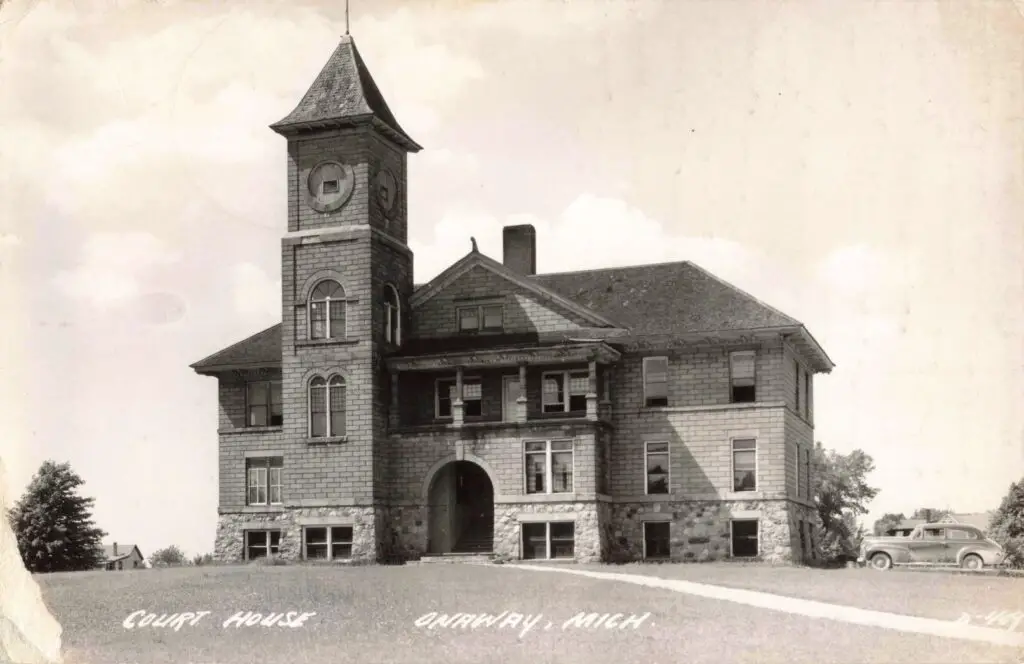
Municipal improvements were an important focus of Onaway’s civic development. By the 1910s the city had established services like a water works, and in 1920 the community paved its first streets, replacing muddy wagon roads with concrete or asphalt in the downtown area. The city council and mayors worked to provide other amenities typical of the era: constables for law enforcement, fire protection (bucket brigades and eventually a fire department), and support for schools and parks. Early civic life also saw the establishment of a Chamber of Commerce and various fraternal organizations that promoted the town’s welfare.
The economic crash after 1926 brought serious civic challenges. With the sudden loss of its tax base (the factories and many residents), Onaway’s city government found itself deeply in debt and short on revenue. The assessed value of property in the city fell by over 85%, meaning that even if officials levied taxes, there were few able or willing to pay.
In 1930, a new mayor, Fred Weingart, took office and led efforts to keep the city afloat. Under Weingart’s leadership, drastic austerity measures were implemented: the positions of city clerk, city manager, street commissioner, and water superintendent were all combined into a single job to save money. City expenditures were slashed to bare essentials. Despite these hardships, the city did not disincorporate or default – a testament to the determination of its officials and citizens.

During the WPA (Works Progress Administration) era, Onaway eagerly pursued federal grants for local projects. These projects provided employment and improved infrastructure (such as repairing streets, enhancing parks, and likely upgrades to public buildings and utilities). By 1940, Onaway’s civic situation was stabilizing. In that year, the city held a “scavenger sale” at which citizens could buy back properties that had been forfeited to the state for unpaid taxes. This allowed many vacant homes and lots to return to private hands and back on the tax rolls, signaling a turning point. Moving into the 1940s, the worst of the crisis had passed – Onaway’s government had survived and was positioned to guide the town’s modest recovery in the years ahead.
Notable Individuals (Founding–1940)
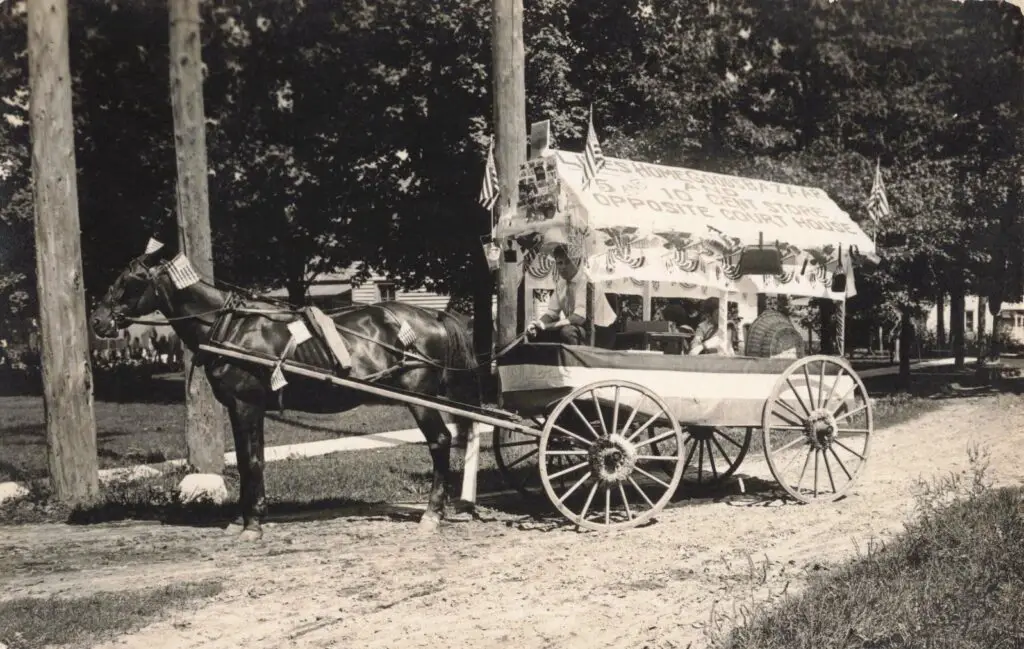
- Merritt Chandler (1843–1928) – A Quaker businessman and the principal founder of Onaway. Chandler was a successful lumberman and road builder who platted the village in 1886. He dreamed of a model community: he built Onaway’s first mercantile store, helped fund its first church, and in 1908 constructed the town’s landmark courthouse (hoping to attract the county seat). Chandler’s influence shaped Onaway’s early growth and moral character (he insisted on no liquor sales on his lands).
- Thomas E. Shaw (1842–1919) – The earliest settler of what became Onaway, and Chandler’s brother-in-law. Shaw arrived in 1881 and gave his name to the first settlement (Shaw’s Post Office). He served as Onaway’s first postmaster (1882–1893) and first schoolteacher, and even operated the first hotel for lumbermen passing through Shaw was a key local leader in the 1880s, holding various civic roles (township supervisor, justice of the peace, etc.) to help organize the community. Although he and Chandler sometimes competed for influence (even renaming the town in rivalry), Shaw’s contributions to Onaway’s founding were indispensable.
- Edward J. “E. J.” Lobdell – An industrialist and entrepreneur who propelled Onaway’s early 20th-century boom. Lobdell moved to Onaway in 1901 from Ohio, bringing his wood-products manufacturing business. As founder of the American Wood Rim Company, he oversaw the manufacture of wooden steering wheels and bicycle rims that gained worldwide recognition for quality. Under Lobdell’s leadership, the Onaway factory became the largest producer of wooden auto steering wheels in the world. After the 1926 fire destroyed the plant, Lobdell relocated his operation downstate, but his role in Onaway’s brief industrial glory was pivotal.
- Fred Weingart – Mayor of Onaway during the critical early years of the Great Depression. Taking office in 1930, Weingart guided the city through financial collapse by cutting costs and consolidating the local government. He took full advantage of New Deal programs to improve the city and refused to let Onaway give up during its “ghost town” phase. Weingart’s leadership helped lay the groundwork for Onaway’s eventual stabilization and recovery by 1940.
Each of these individuals left a mark on Onaway’s history – from its founding vision and rapid growth to its industrial achievements and the community’s endurance in hard times. Their legacies, along with the collective spirit of countless ordinary residents, shaped the story of Onaway, Michigan, in the era from its founding through 1940.
Sources
- Richard Lamb, “Onaway, Michigan: The First 50 Years,” Onaway Outlook, July 1999 (via Presque Isle Advance)
- Onaway Historical Museum – Brief History and “Onaway Steers the World” archives.
- Michigan Place Names (Walter Romig, 1986) – Entry on Onaway’s founding and naming.
- Lost In Michigan history blog – “The Courthouse in Onaway” (2021)
- Atlas Obscura – “Onaway Steers the World” (historical overview of Wood Rim Co.)
- Onaway Outlook newspaper archives (interviews and reminiscences) via MIGenWeb
- Michigan DNR – History of Onaway State Park (centennial commemorative information)
- Tthe digital collection David V. Tinder Collection of Michigan Photography. William L. Clements Library, University of Michigan Library Digital Collections. May 17, 2025.
